What Are All the Kitchen Knives For? Knives Types and Uses
If you are anything like me, you are probably wondering why we would need so many kitchen knives when a simple, medium-sized one could do the trick just as easily. Truth is, by stubbornly using the same type of knives for every type of produce – like cutting pork meat with a single-edge serrated knife – we needlessly complicate our lives. Even worse, it artificially shortens the lifespan of the knife.
You could save a lot of time and effort by having the right knife for the right job. There are tons of variants, but if you are not planning on becoming a chef, there is no need in familiarizing yourself with every niche. Without further ado, here are a few types of kitchen knives and their uses.

Chef Knives
Chef’s Knife has one the most balanced difficulty curves when it comes to kitchen knives. Its design is advanced enough for a professional chef while being simple enough as to not intimidate a casual cooking enthusiast. They were originally designed for cutting, slicing and disjointing large pieces of beef. A fine collection of kitchen tools should always include a few top-notch chef knives like Damascus kitchen knives, each suited for a specific type of job. For more information about how to choose the best knife for your needs be sure to check out Chef Knives.
Generally speaking, a chef knife has a length of 20 centimeter in length, and 3.8 cm in width. There are three widely known variants of chef knifes:
- German – the blade is more curved along the cutting edge
- French – the blade is straight and it starts curving near the tip
- Japanese – called gyuto (beef knife)
It is one of the most versatile knives on the market. There is nothing you cannot do with it – slicing, dicing, chopping, mincing. Still, it is recommended you not use it to peel vegetable skins.
Cleaver Knives
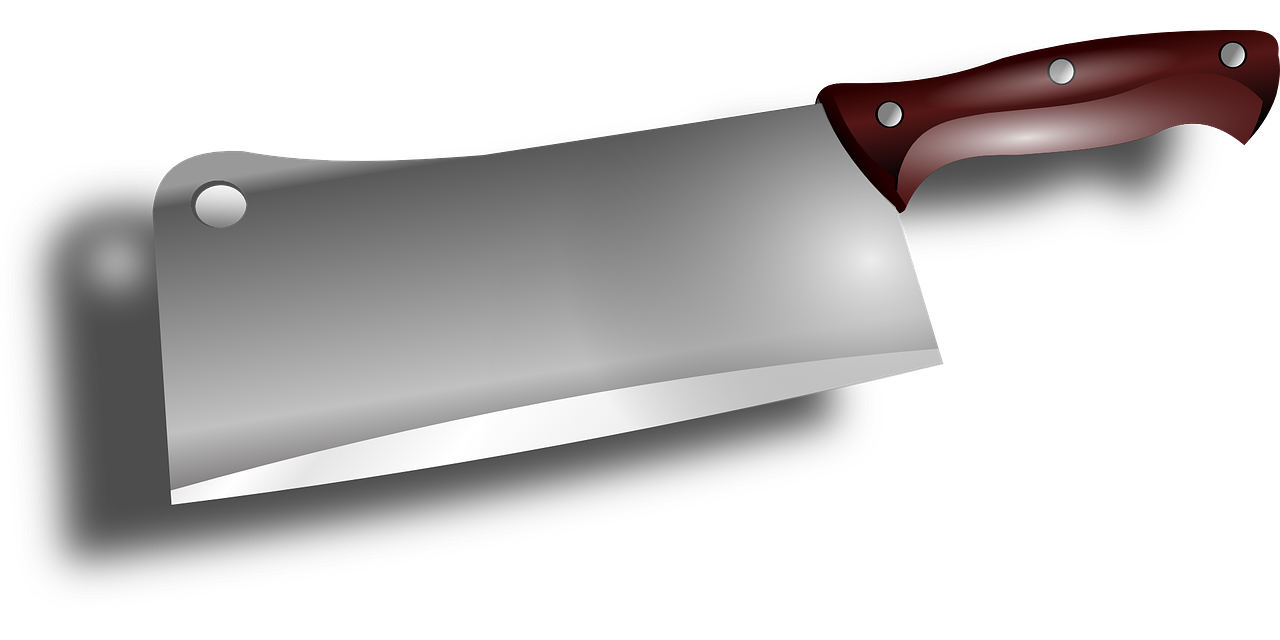
Cleavers are large knives typically using by butchers in abattoirs. In comparison to other kitchen knives, the toughness of its edge is designed for powerful, repeated blows into bone, cartilage and thick meat. It must be swung like a hammer or a meat tenderizer. Since the cleaver is not meant to be used for sawing and slicing, its edge is not very sharp.
If you want to prepare chicken, cleavers are an adequate choice. Its thin bones can be chopped through and its ribs can be separated by using this weighty knife. Large, hard vegetables can also be prepared with a cleaver.
Santoku Knives
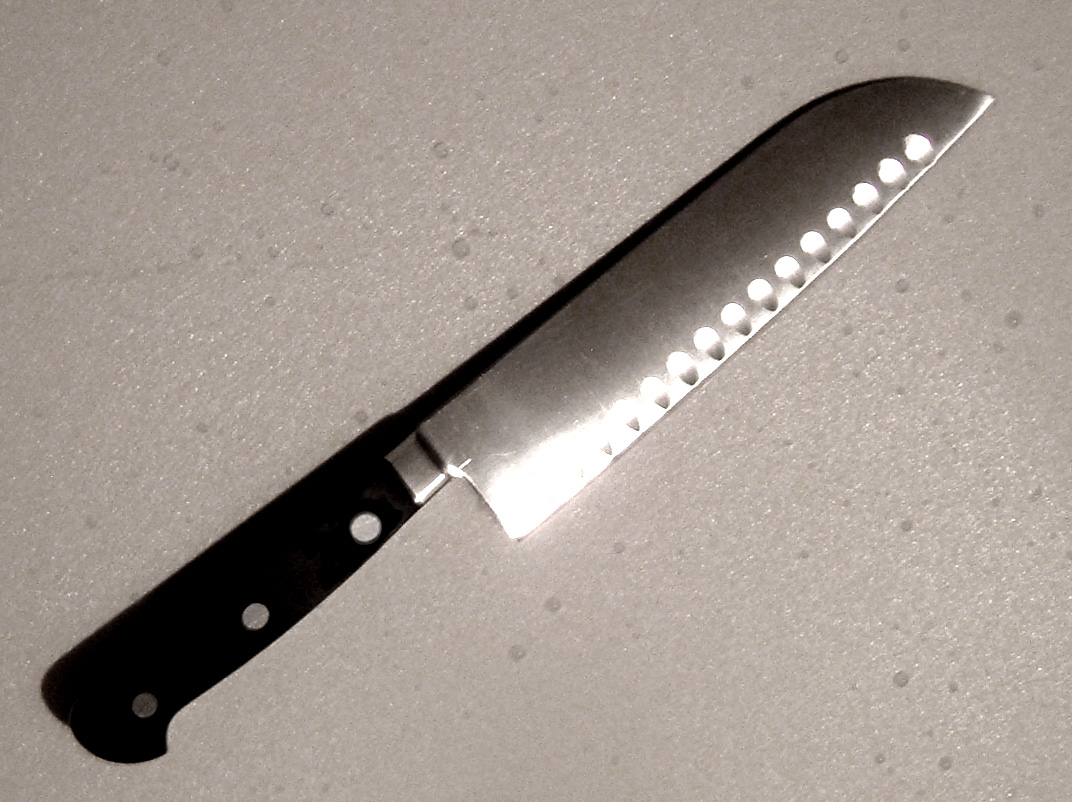
From a purely design standpoint, a santoku knife looks like a combination between a cleaver and a chef’s knife. Practically, though, it merges the purposes of a sheep’s foot paring knife and a chef’s knife. It’s an ideal choice both for dicing, slicing and chopping like a chef’s knife, and thanks to the flat design of the blade, it can be used to easily julienne (cut the meat into thin slices).
But this is where their similarities end because the santoku knife requires a different technique. They have a steeper difficulty curve than your standard chef knife but mastering its quirks will make the user feel like a master butcher. It allows you to cut the meat into precise, elaborate patterns thanks to its sharp angles and thin blade. With this knife, you can cut the meat as think as you like.
Bread Knife
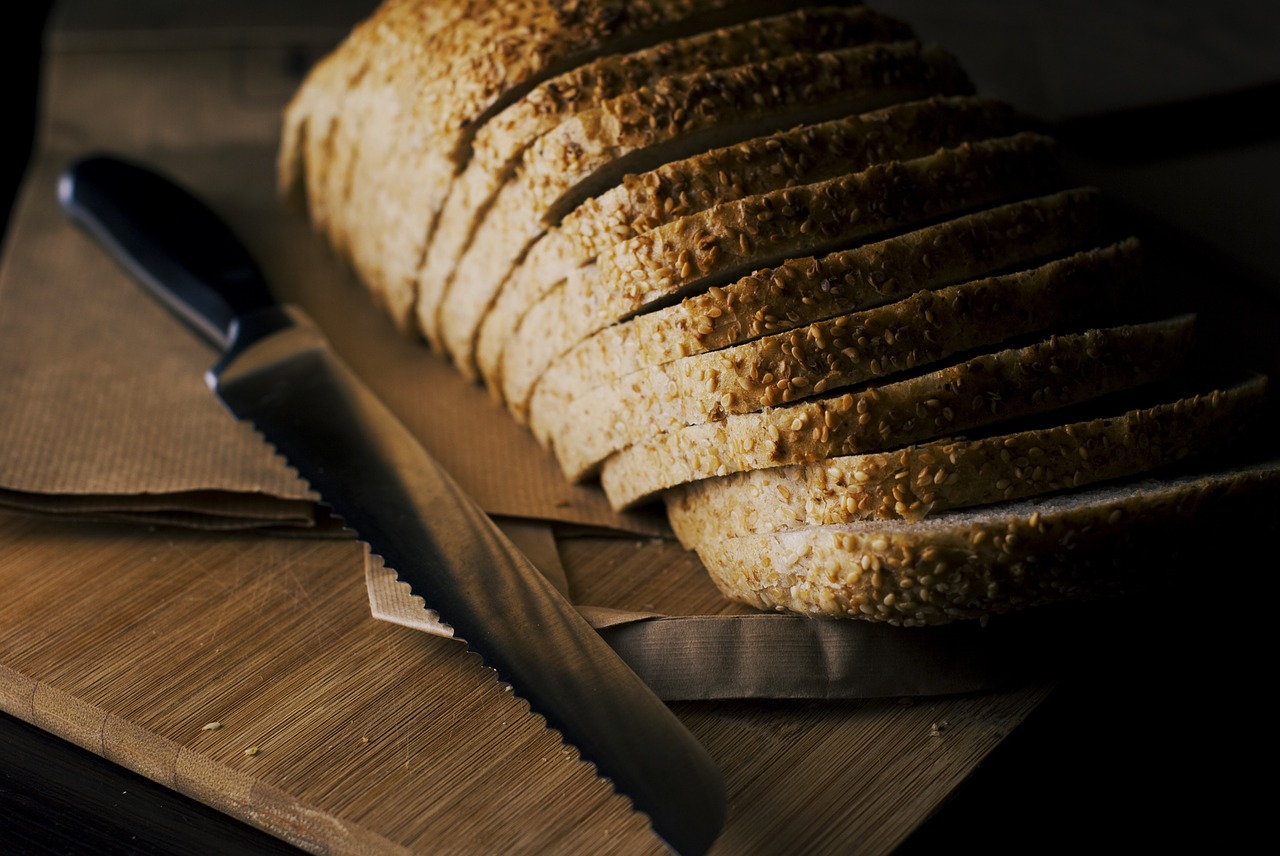
The bread knife is designed to cut through soft, squishy materials without running the integrity of the product. Thanks to its jagged edge, you can also use it to grip waxy foods like watermelons and pineapples without the risk of hurting yourself.
Not all bread knives are alike, though. The serrations and teeth might vary from knife to knife, with different spacings. Make sure to choose the right type of knife, as some breads might be particularly crusty or hard.
Steak Knives
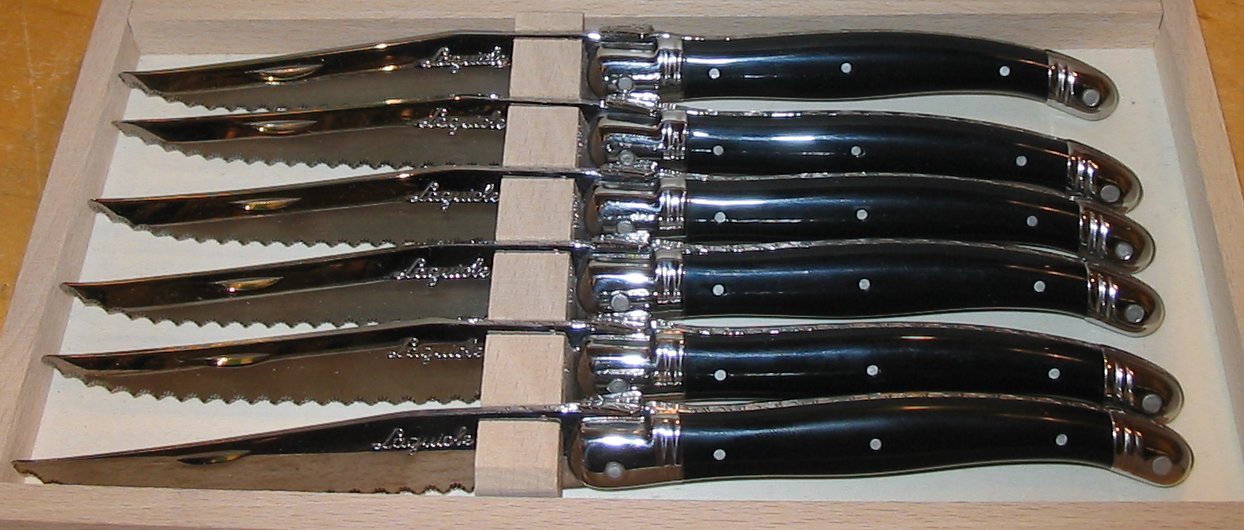
Steak knives, are the names suggests, are table knives used for cutting steaks. They feature wooden handles and serrated blades, perfect to cut the steak into fine, precise pieces. It is feasible, easy to use and reliable.
Steak knives and grew in popularity in America, After World War II. Before that, most sharp knives required frequent upkeep. The steak knife was one of the first commercially available kitchen tools that didn’t need any extensive maintenance. Like today, once you acquire a quality steak knife, you will not need to buy another one for a while thanks to their endurance.
Carving Knife
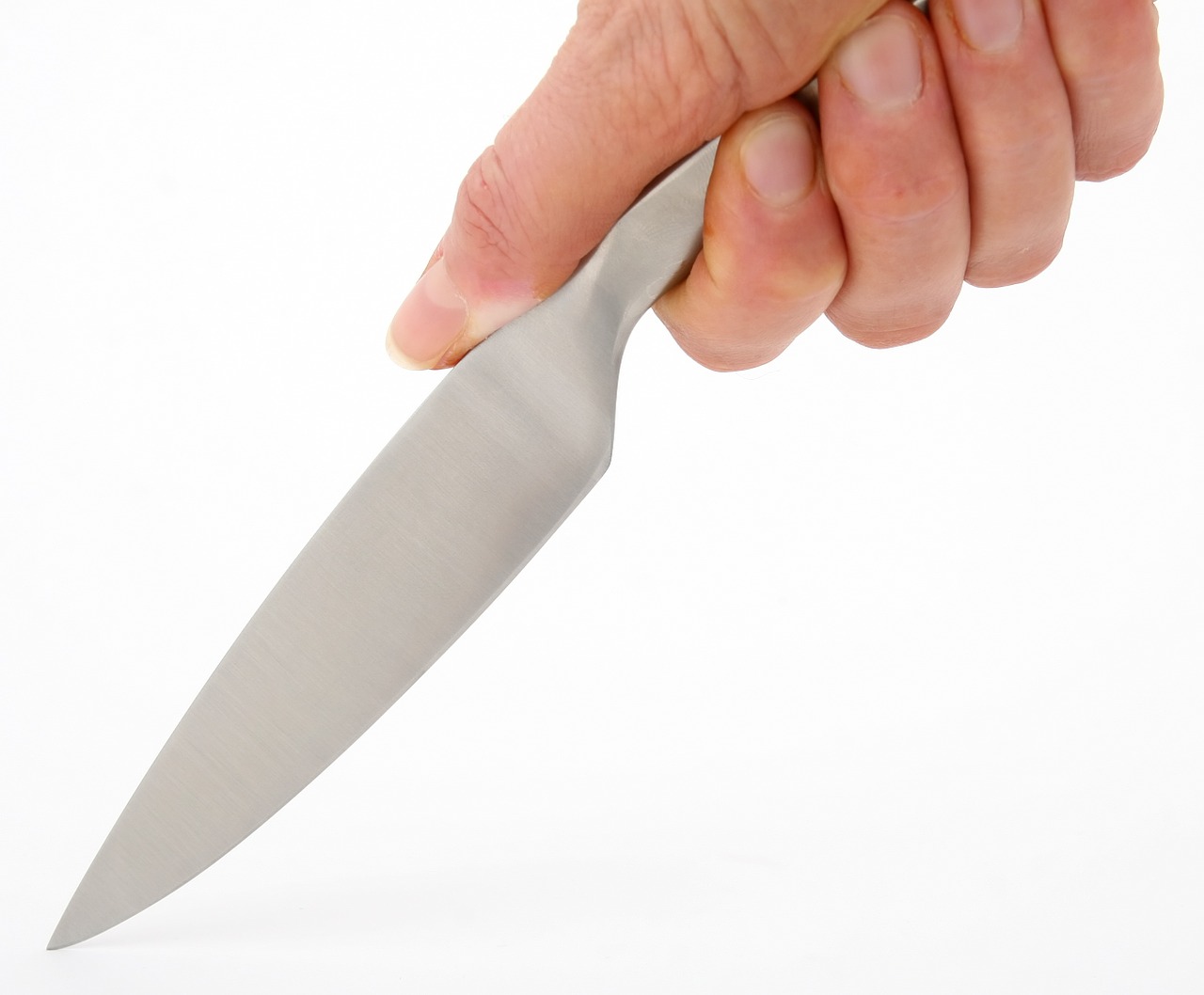
The carving knife (or slicing knife, or simply slicer) is a kitchen tool perfectly suited for slicing poultry or meat. If you are concerned about aesthetics and arrangements, the carving knife is perfect, because it can cut cooked poultry such as turkey and chicken into neat, uniform slices. These knives have a special place in Jamie Oliver’s heart due to their practicality.
Some sources will differentiate between carving and slicing knives, and some people might get confused as to what exactly makes them different from each other. If you want a standard carving knife, make sure it has a pointy tip and a tight, thin blade. The thin blade is designed to lower the resistance when it goes back and forth. There are some carving knives that have round tips, and they are usually used in restaurants.
Boning Knives
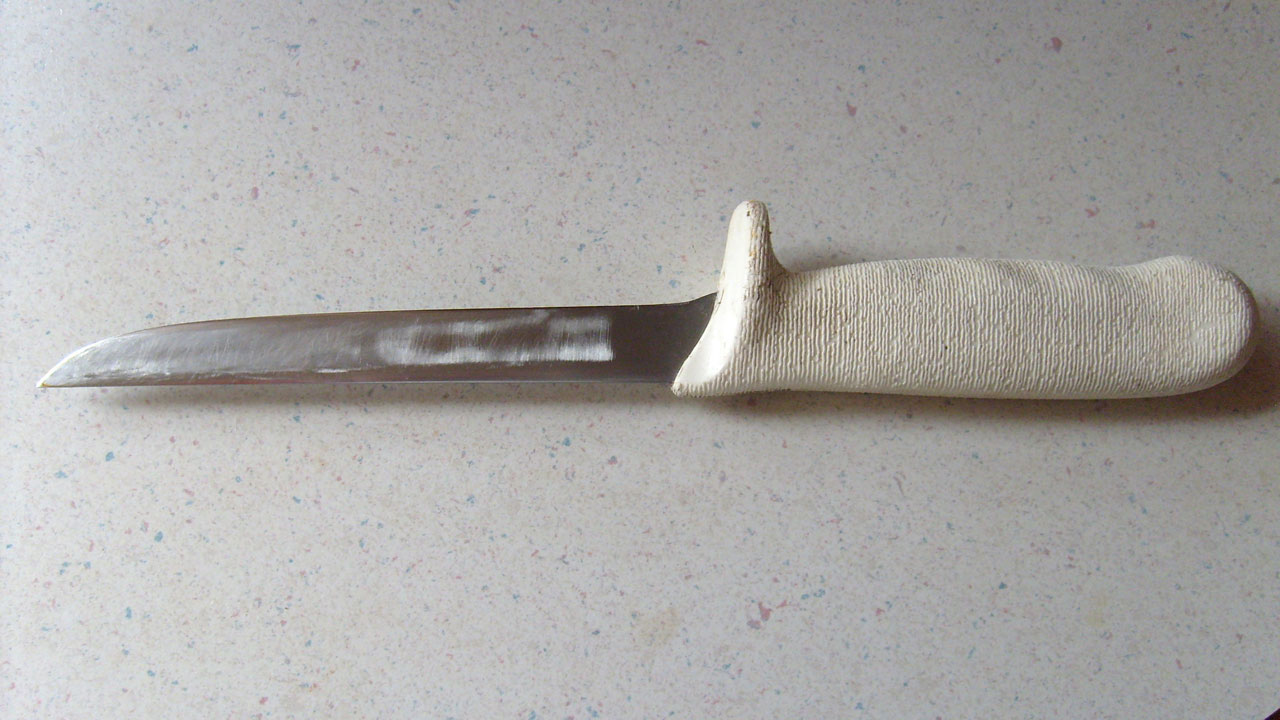
A boning knife an be distinguished from the rest of the kitchen tools by its sharp point and narrow blade. As the name suggests, it is mainly used for bone removal when preparing fish, meat and poultry.
The boning knife is used by professional butchers and cooks because it allows the user to remove neat, precise slabs of meat very close to the bone. Due to its flexible and feasible blade, you can cut flawless portions of chicken breasts, steaks and roasts without squandering any perfectly edible pieces of meat.
Conclusion
If you are an avid kitchen enthusiast and want to take it to the next level, this guide is a good starting point. You do not have to be a professional cook to educate yourself when it comes to kitchen knives. Familiarizing yourself with all the types of kitchen knives will at least save you a lot of time and money because it will prevent you from ruining a perfectly fine bread knife by cutting steak with it.

Great article! Yeah, a chefs knife and paring knife do most of the kitchen duty. A serrated bread knife also good for tomatoes. A filleting knife if you do a lot of fish.